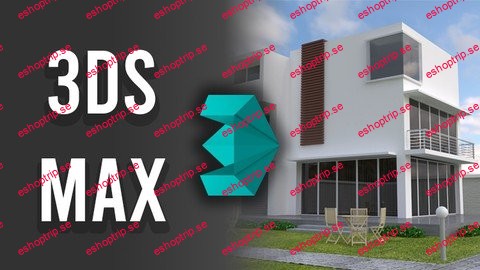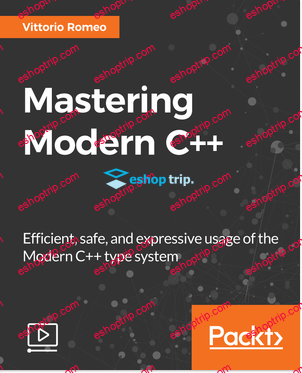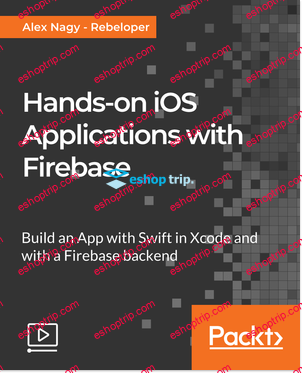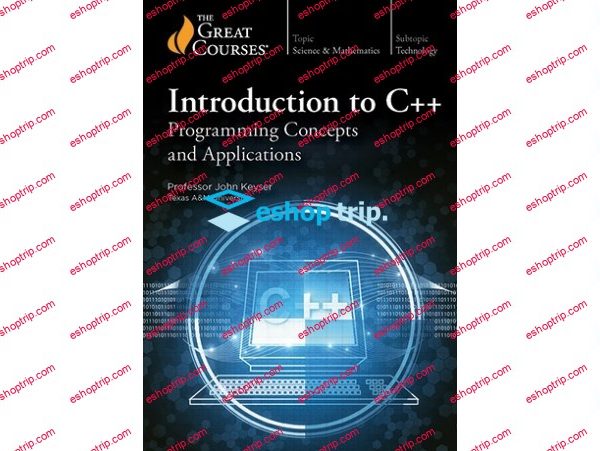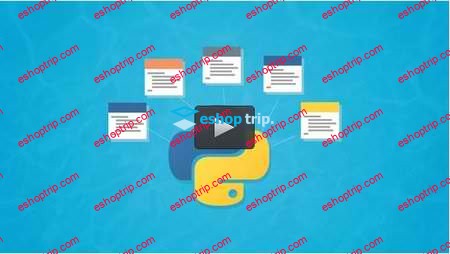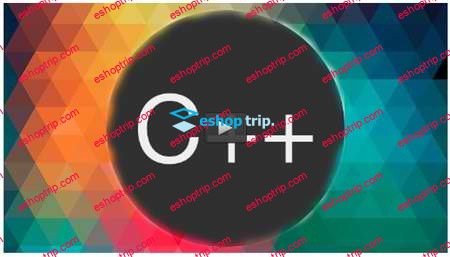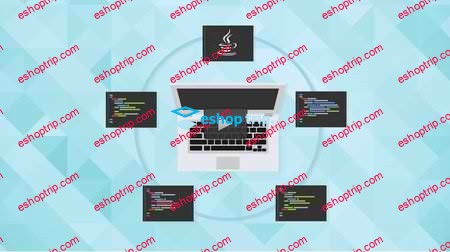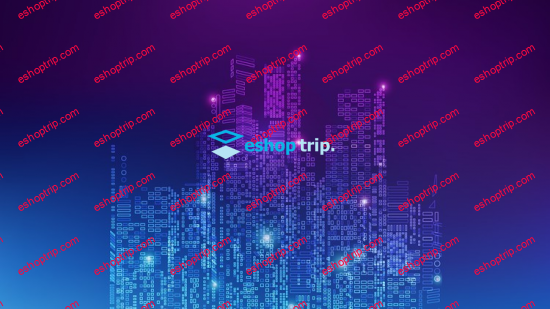Published 8/2024
MP4 | Video: h264, 1920×1080 | Audio: AAC, 44.1 KHz
Language: English | Size: 12.7 GB | Duration: 25h 59m
Unlock the full potential of Windows app development with our comprehensive UWP Universal Windows Platform course
What you’ll learn
Introduction to UWP: Students will be introduced to the core concepts of UWP, the advantages of one core operating system, one store, and one developer center
Design and Development Paradigms: Learners will explore design paradigms, development roadmaps, and best practices for creating intuitive and UWP apps
XAML and UI Development: Students will dive deep into XAML, the markup language used for designing UWP interfaces.
Event Handling and Navigation: The course covers how to handle events in UWP apps, navigate between pages, and manage the app’s lifecycle.
Intermediate and Advanced UWP Features: Learners will study more complex topics such as adaptive UI, typography, hamburger menus, effective pixels, snap points
Hands-on Projects: The course includes practical projects where students will build multiple UWP apps, applying the concepts learned.
Data Binding and Management: Students will learn about data binding techniques, managing data templates, and implementing data-driven features
Final Projects and Submission: By the end of the course, learners will be able to build, package, and submit their UWP applications to the Microsoft Store
Requirements
Basic Programming Knowledge: Familiarity with basic programming concepts and experience in at least one programming language (such as C#, Java, or Python) is recommended.
Windows 10 Operating System: Students should have access to a Windows 10 PC to follow along with the course and practice developing UWP applications.
Visual Studio: Installation of Visual Studio 2019 or later with the UWP development workload is required.
Basic Understanding of XAML: While not mandatory, having a basic understanding of XAML (Extensible Application Markup Language) will be beneficial as it is used extensively for designing UWP applications.
Description
IntroductionWelcome to the UWP Universal Windows Platform course, where you’ll embark on a journey to master the development of modern, responsive, and feature-rich applications for the Windows ecosystem. This course is meticulously designed to cater to beginners, intermediate, and advanced developers, ensuring a comprehensive understanding of UWP and its vast capabilities.Section 1: UWP Universal Windows Platform – BeginnersIn the beginner’s section, you will be introduced to the fundamentals of the Universal Windows Platform. You will explore the core concepts such as the unified operating system, the single store for app distribution, and the centralized developer center. This section will also cover the essential features of Windows 10 and guide you through setting up your environment to start developing UWP applications. By the end of this section, you will have a solid foundation in UWP and be ready to create your first “Hello World” application.Section 2: UWP Universal Windows Platform – IntermediateThe intermediate section delves deeper into the development aspects of UWP using XAML (Extensible Application Markup Language). Here, you will learn to create and customize UI components, handle events, and apply themes and styles to your applications. The section emphasizes the importance of design paradigms and navigation models, ensuring that your applications are not only functional but also visually appealing and user-friendly. You will also explore the differences between emulators in various Windows versions, which is crucial for testing and debugging your apps.Section 3: UWP Universal Windows Platform – AdvancedThe advanced section is tailored for developers looking to leverage the full potential of UWP. You will learn about adaptive UI techniques, typography, and effective use of pixels to create responsive applications that work seamlessly across different devices. This section also introduces advanced XAML controls, split view control, and adaptive visual states. By mastering these concepts, you will be able to create sophisticated, high-performance applications with a professional look and feel.Section 4: Projects on UWP – Building 4 UWP AppsIn the final section, you will apply your knowledge by working on four comprehensive UWP projects. These projects will cover a wide range of functionalities, from simple form applications to complex layout apps. You will gain hands-on experience with various XAML properties, data binding, navigation, and adaptive layouts. This practical approach will solidify your understanding and prepare you to tackle real-world UWP development challenges confidently.ConclusionBy the end of this course, you will have a thorough understanding of UWP, from the basics to advanced concepts. You will be equipped with the skills to develop, design, and deploy high-quality Windows applications that can run on any device within the Windows ecosystem. This course is your gateway to becoming a proficient UWP developer, ready to innovate and create impactful applications.
Overview
Section 1: UWP Universal Windows Platform – Beginners
Lecture 1 Introduction
Lecture 2 One core operating system
Lecture 3 One store
Lecture 4 One store Continues
Lecture 5 One developer center
Lecture 6 2500+ new features
Lecture 7 Getting windows 10
Lecture 8 Universal windows platform
Lecture 9 Universal windows apps
Lecture 10 Universal windows apps Continues
Lecture 11 Platform extensions
Lecture 12 Devlopment roadmap
Lecture 13 Design paradigms
Lecture 14 Design paradigms (Continues)
Lecture 15 Creating a new project
Lecture 16 Hello World
Lecture 17 4 inch configuration
Lecture 18 Create an event handler
Lecture 19 Orientations and dimensions
Section 2: UWP Universal Windows Platform – Intermediate
Lecture 20 What is XAML
Lecture 21 Create a button
Lecture 22 Editing the button
Lecture 23 Editing the button Continues
Lecture 24 Define the elements in XAML
Lecture 25 Star sizing
Lecture 26 Example on XAML
Lecture 27 Stack Panels
Lecture 28 Events
Lecture 29 Recap
Lecture 30 Common XAML controls
Lecture 31 Combo box
Lecture 32 Check box
Lecture 33 Date picker
Lecture 34 Slider control
Lecture 35 Themes and styles in XAML
Lecture 36 Creating a style
Lecture 37 Theme resources
Lecture 38 Understanding navigation model
Lecture 39 Changing the parameter
Lecture 40 Protected Override
Lecture 41 Navigating the pages
Lecture 42 Navigating the pages Continues
Lecture 43 Difference between Emulator in Windows 8 and 10 version for Mobile
Lecture 44 Versions of the Emulator
Lecture 45 Working on the keyboard
Lecture 46 SD card simulation
Section 3: UWP Universal Windows Platform – Advanced
Lecture 47 Resizing and effects in adaptive UI
Lecture 48 Learning about UI
Lecture 49 Typography in windows 10
Lecture 50 Hamburger Menus
Lecture 51 Effective pixels
Lecture 52 Snap points
Lecture 53 Adaptive Approaches
Lecture 54 Applying adaptive designs
Lecture 55 Fix the text on phone
Lecture 56 Resolutions
Lecture 57 Adaptive visual states
Lecture 58 New XAML controls
Lecture 59 Split view control
Lecture 60 Create a Hamburger button
Lecture 61 Code for the event handler
Section 4: Projects on UWP – Building 4 UWP Apps
Lecture 62 Introduction
Lecture 63 Requirements
Lecture 64 Synopis Of Hello World
Lecture 65 More on Hello World
Lecture 66 XAML
Lecture 67 More on XAML
Lecture 68 Type Converters
Lecture 69 XAML Properties
Lecture 70 More on XAML Properties
Lecture 71 Schemas And Namespaces
Lecture 72 Grid Layout
Lecture 73 Row Definition
Lecture 74 Column Definitions
Lecture 75 Stack Panel
Lecture 76 Stack Panel Orientation
Lecture 77 Example on Stack Panel
Lecture 78 Simple Form App
Lecture 79 Simple Form App Continues
Lecture 80 Simple Layout App
Lecture 81 Complex Layout App
Lecture 82 More on Complex Layout App
Lecture 83 Relative Panel
Lecture 84 Relative Panel Continues
Lecture 85 Creating Search Bar
Lecture 86 Text Block
Lecture 87 Split View
Lecture 88 Navigation
Lecture 89 More on Navigation
Lecture 90 XAML Controls
Lecture 91 XAML Controls Continues
Lecture 92 Fill Up Code on XAML
Lecture 93 Hamburger Menu
Lecture 94 More on Hamburger Menu
Lecture 95 Creating Simple Hamburger
Lecture 96 Create Split View
Lecture 97 My Flyout
Lecture 98 My Flyout Continue
Lecture 99 Auto Suggest Box
Lecture 100 Calender View
Lecture 101 Scroll Viewer
Lecture 102 Various Shape Control
Lecture 103 Canvas And Shapes
Lecture 104 XAML Styles
Lecture 105 XAML Styles Continue
Lecture 106 XAML Scenes
Lecture 107 Mock Coffee Shop App
Lecture 108 Mock Coffee Shop App Continues
Lecture 109 Donut Page XAML
Lecture 110 Coffe Page XAML
Lecture 111 Coffe Page XAML Continues
Lecture 112 Schedule Meaning
Lecture 113 Complete Page XAML
Lecture 114 Adaptive Triggers
Lecture 115 More on Adaptive Triggers
Lecture 116 Main Page XAML
Lecture 117 Adaptive Layouts
Lecture 118 Adaptive Layouts Continues
Lecture 119 Data Binding
Lecture 120 More on Data Binding
Lecture 121 Main Page XAML CS
Lecture 122 Changing Grid View
Lecture 123 Data Binding Example
Lecture 124 Private List Icons
Lecture 125 Bound Item Source
Lecture 126 Visual State Manager
Lecture 127 Data Template
Lecture 128 Mock News App
Lecture 129 Mock News App Continues
Lecture 130 Adding New Folder – Model
Lecture 131 New Item CS
Lecture 132 Fill Data Template
Lecture 133 Completing Financial App
Lecture 134 Continue on Adaptive Layouts
Lecture 135 Simple Sound App
Lecture 136 Simple Sound App Continues
Lecture 137 Creating Classes
Lecture 138 Creating Two Different Private Variable
Lecture 139 Media Elements
Lecture 140 Drag and Drop Functionality
Lecture 141 Auto Suggest Search Filter
Lecture 142 Auto Suggest Search Filter Continues
Lecture 143 Submitting the App
Lecture 144 Create App Packages
Lecture 145 Simple Weather App
Lecture 146 More on Simple Weather App
Lecture 147 Simple Music Match Game
Lecture 148 Simple Music Match Game Continues
Lecture 149 Set up Data Binding
Lecture 150 Create Private Property Class
Lecture 151 Changes in Images
Lecture 152 Private int Round
Lecture 153 Song Grid View Method
Lecture 154 Correct Song Title
Lecture 155 Prepare New Game
Lecture 156 Microsoft Add Example
Lecture 157 Adjust Height, Grid and Row
Lecture 158 Add Storage Folders
Lecture 159 Simple Content Explorer
Lecture 160 Simple Content Explorer1
Lecture 161 Create Marval Facade
Lecture 162 Character Data Wrapper
Lecture 163 Getting Json Massage
Lecture 164 Include System Collections
Lecture 165 Attribution Marvel
Lecture 166 Existing Grid Details
Lecture 167 New Bitmap Image
Lecture 168 Get Character Data Wrapper
Lecture 169 Changing Character
Lecture 170 Add Marvel Comics
Lecture 171 Comic Details Images
Lecture 172 X Men Comics
Lecture 173 Add Scroll Viewer
Lecture 174 Visual State Group
Lecture 175 Text Block Comic Detail
Lecture 176 Cortana Sample App
Lecture 177 Cortana Example Commands
Lecture 178 Create Rectangle Color
Lecture 179 Voice Command Dictionary
Aspiring Developers: Beginners who are new to programming and want to start their journey with a comprehensive introduction to Universal Windows Platform (UWP) development.,Experienced Developers: Developers who are familiar with other programming languages and platforms and want to expand their skills by learning how to create applications for the Windows 10 ecosystem using UWP.,Software Engineers: Professionals looking to enhance their knowledge of UWP to build robust and scalable Windows applications.,Students: Computer science and engineering students who want to learn UWP development as part of their academic curriculum or personal interest.,Hobbyists and Enthusiasts: Technology enthusiasts and hobbyists who enjoy exploring new platforms and want to create Windows apps for personal projects or as part of a portfolio.,Freelancers and Independent Developers: Individuals seeking to develop and publish their own applications on the Microsoft Store, leveraging the unique features and capabilities of the UWP platform.,Project Managers and Technical Leads: Professionals who need to understand UWP development to manage and lead teams working on Windows applications.
Homepage


